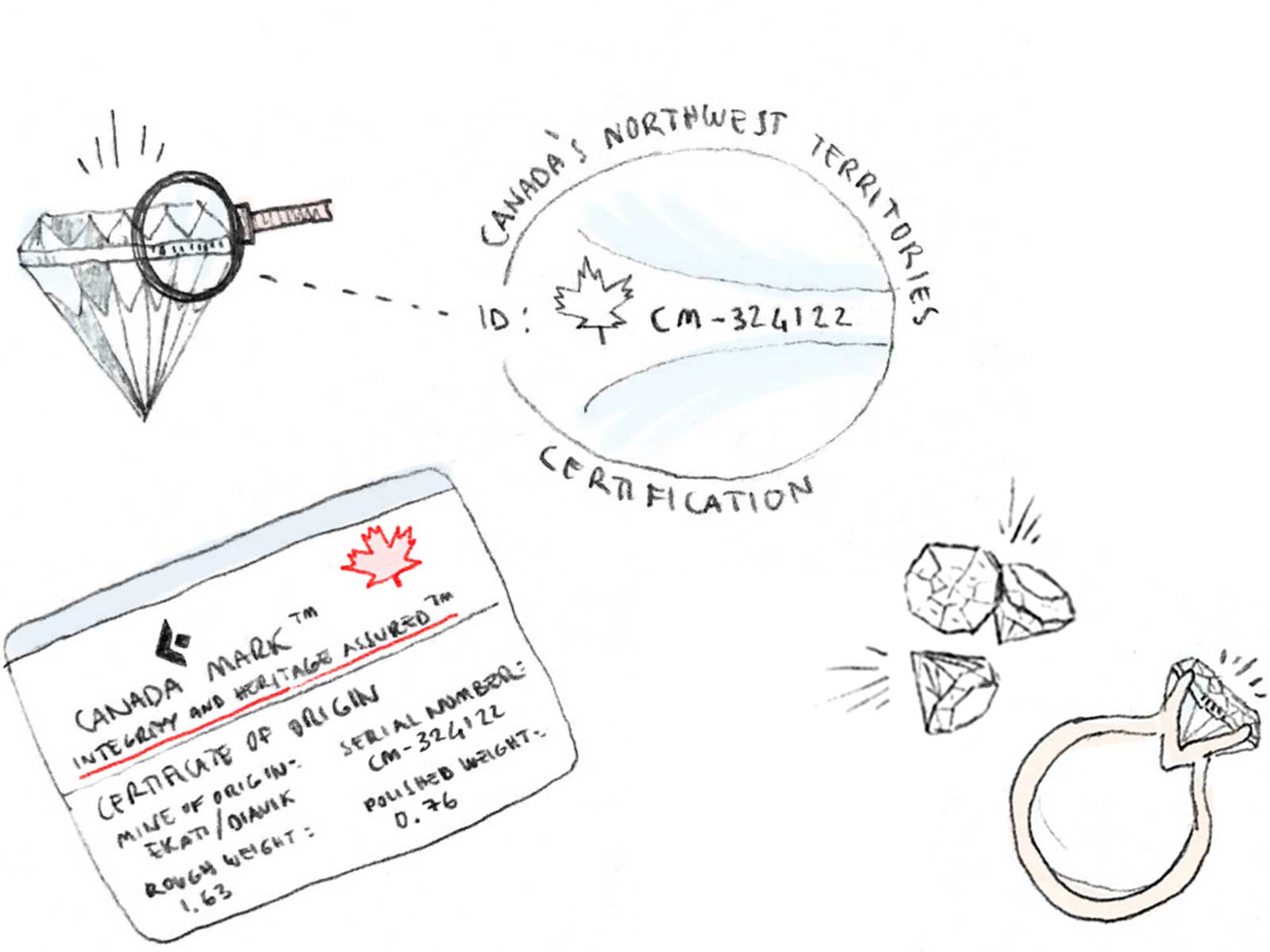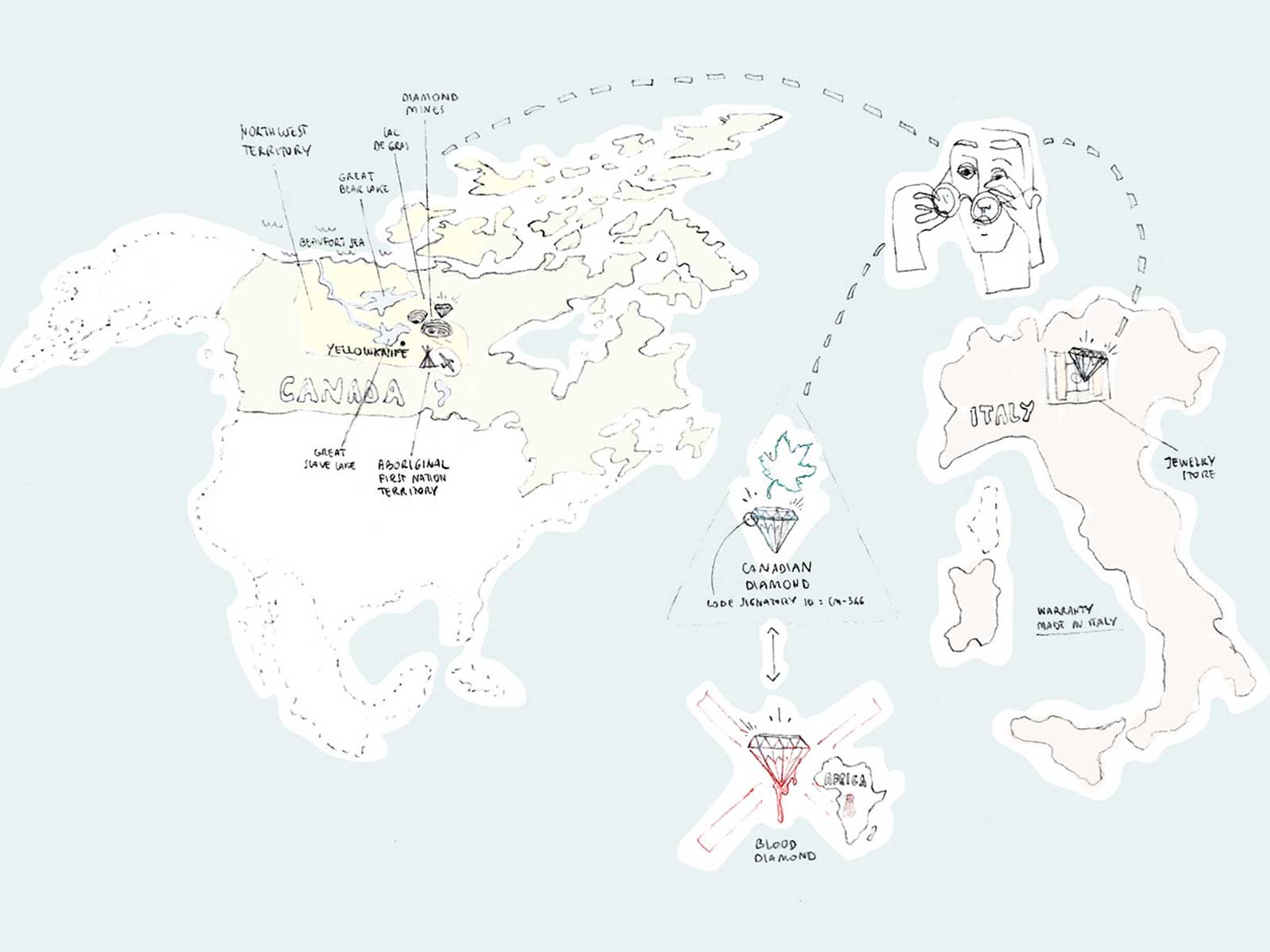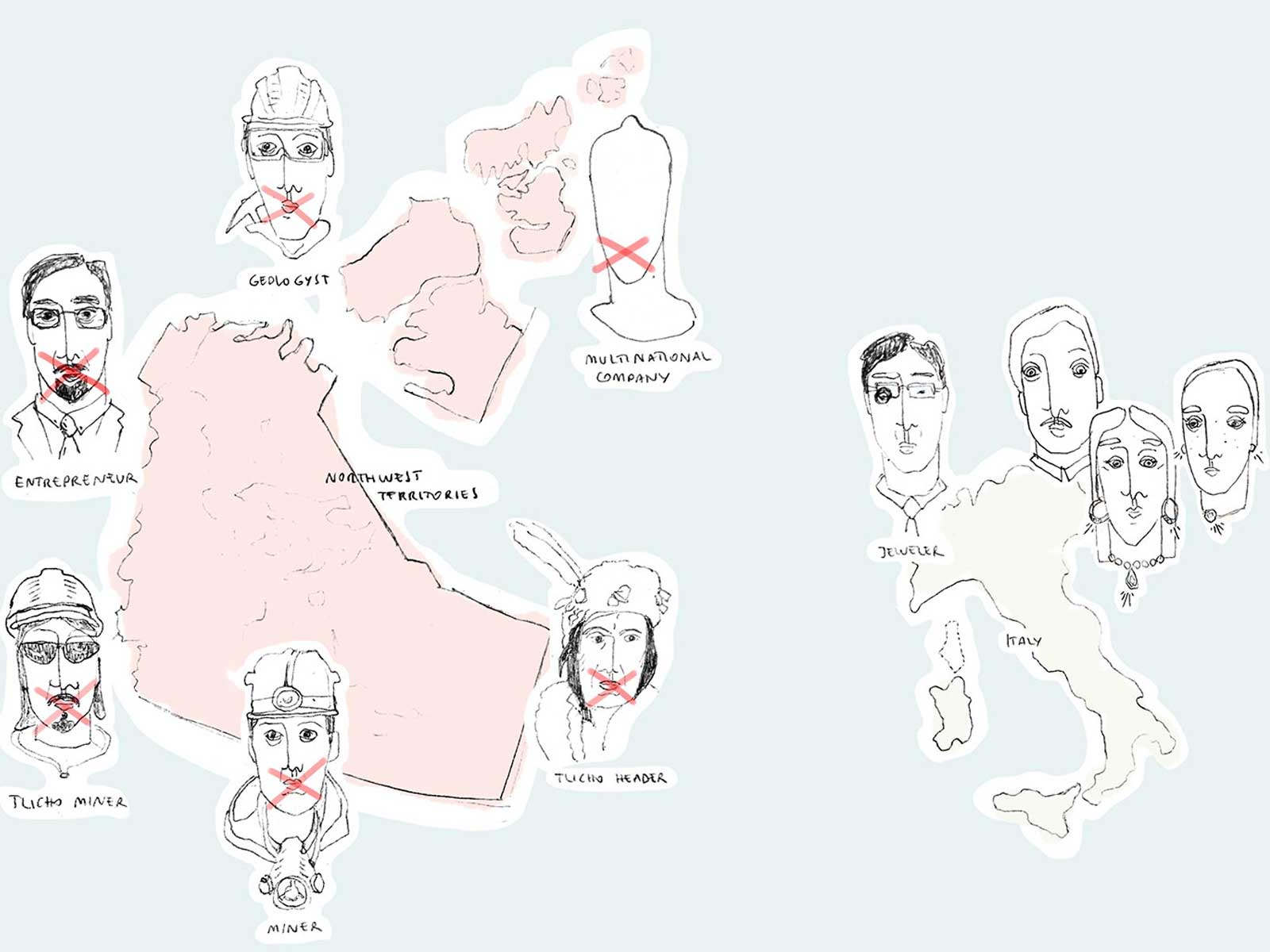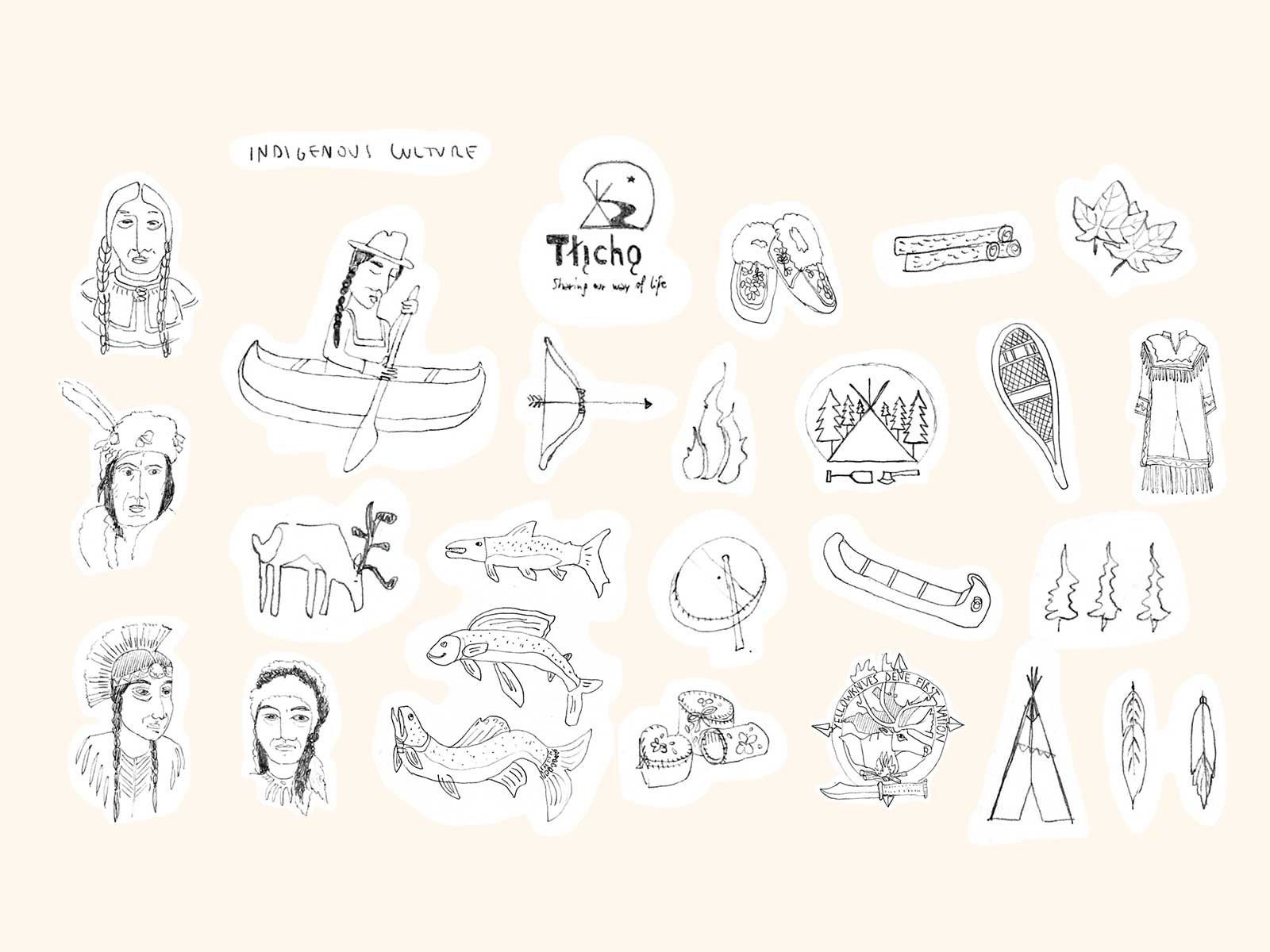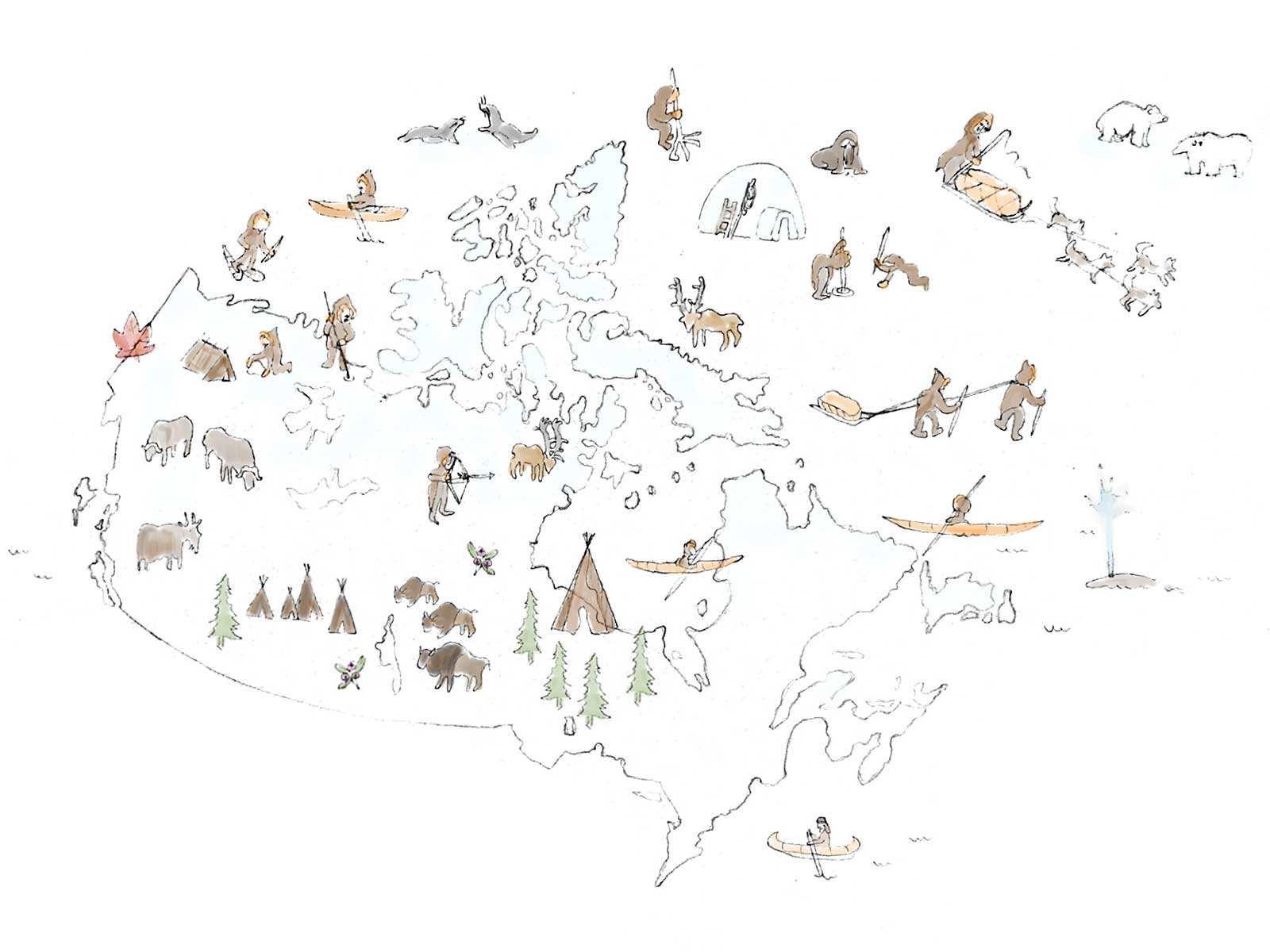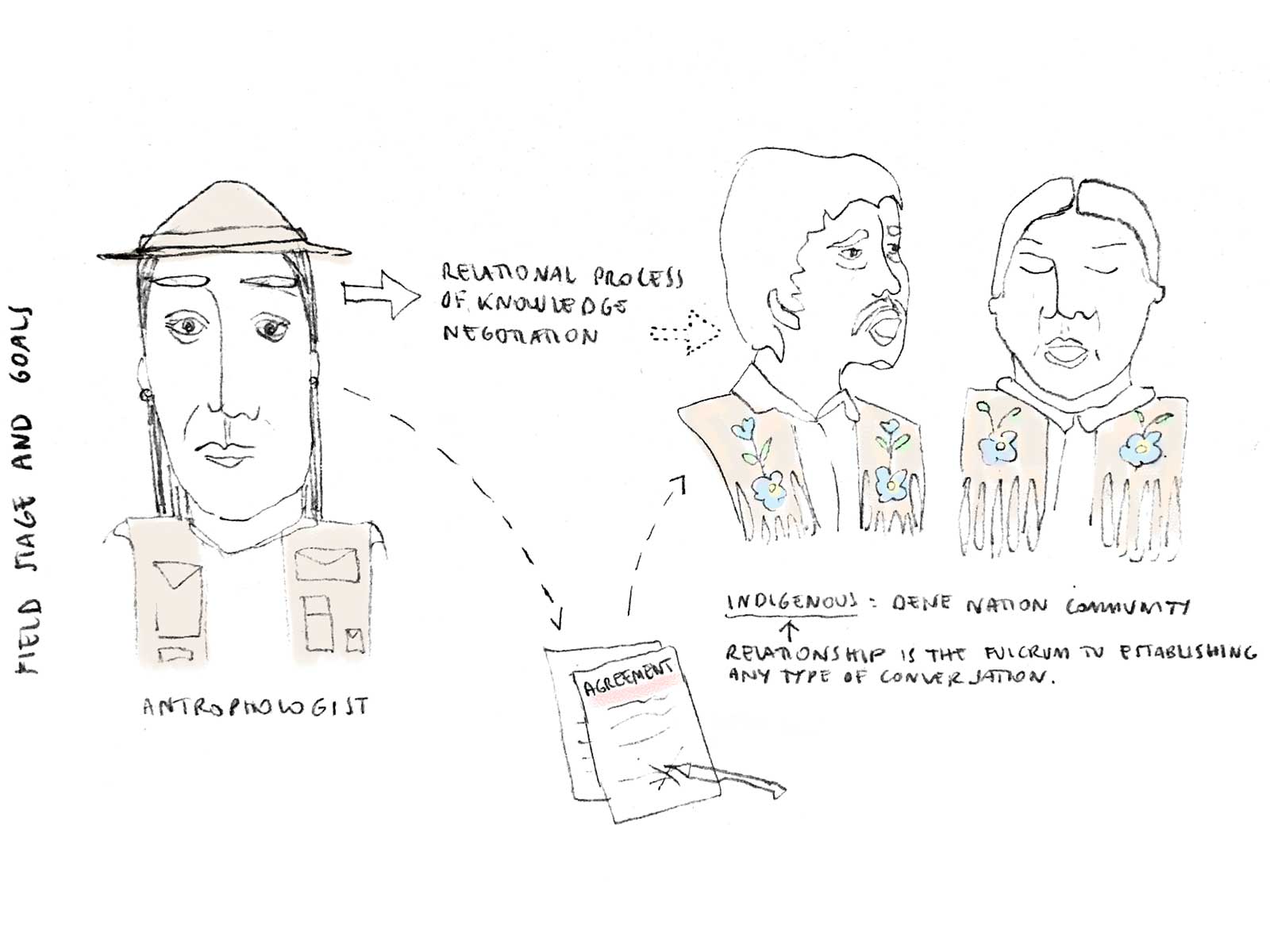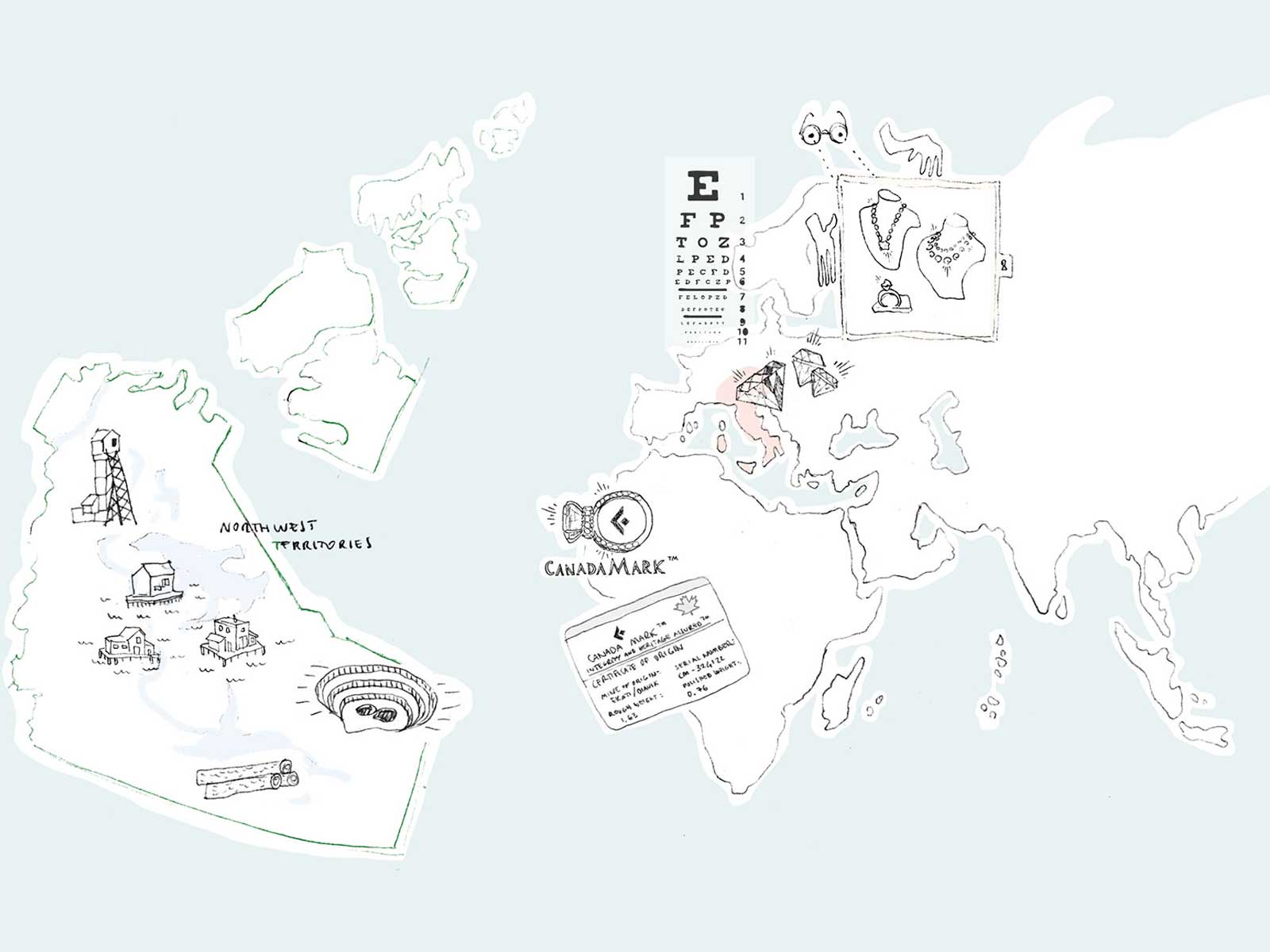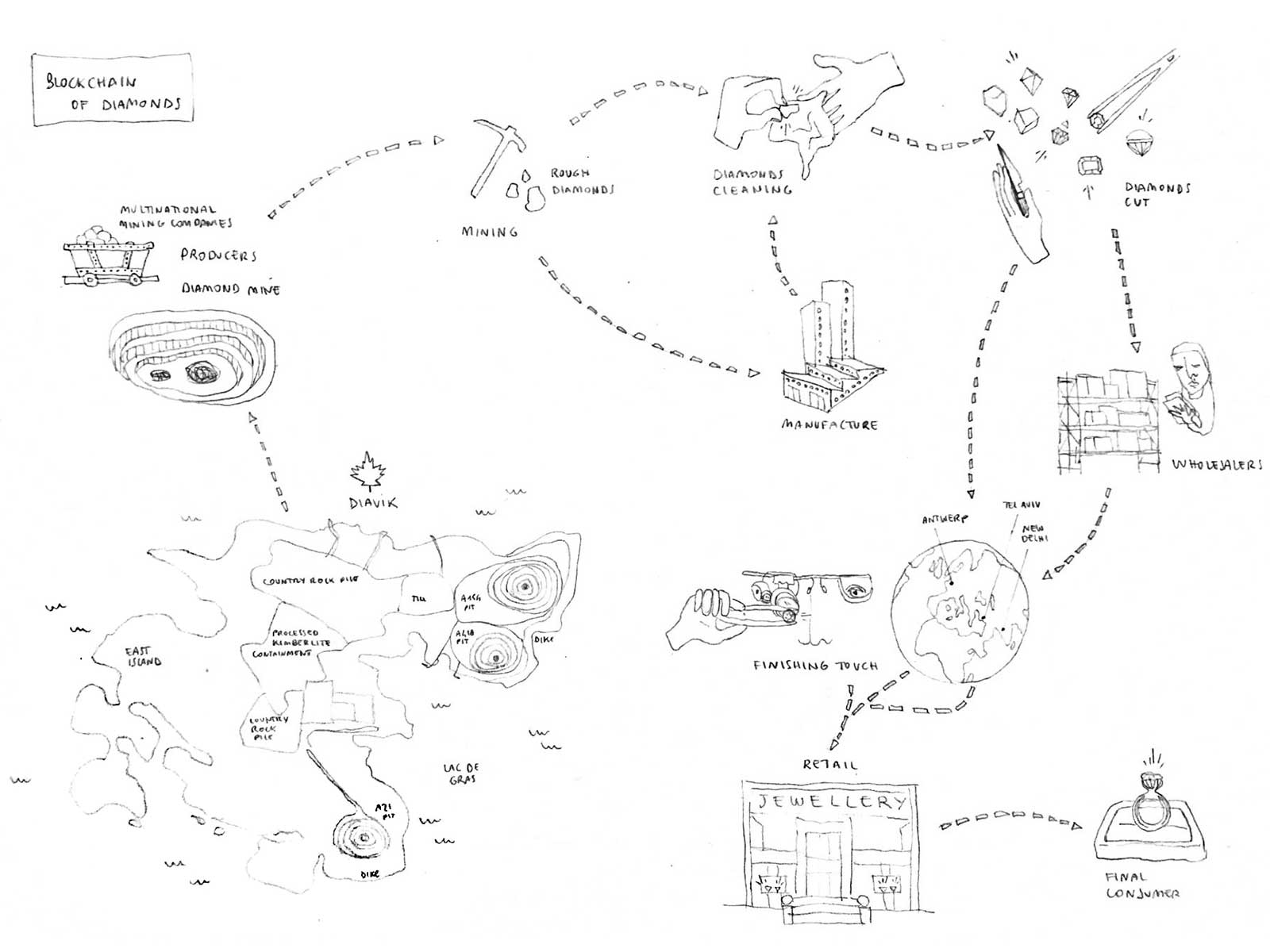DiaEthic
Objective
The main objective of DiaEthic is to retrace the cultural interpretations that, from the mine to retail, enrich the ethical value of diamonds. The project aims to understand how the concepts of ethics become legitimate and recognized among participants.
Online survey
The following survey is totally anonymous and no personal data will be collected. Utilizing such data protection, the data collected do not enter in any of the categories for whom the Italian “Personal data protection code” (Legislative Decree no. 196 of 30th June 2003) and do not require an official approval on the part of the national “Garante per la protezione dei dati personali”.
Topics
The mines in the Northwest Territories were put into production at the same time as the global political agenda was pervaded by protests and concerns about blood diamonds mined in African mines. Especially since the late 1990s, many multinational mining companies have started to publish annual reports showing how their CSR particles were implemented and in the early 2000s, such practices were politically framed in terms of sustainable development.
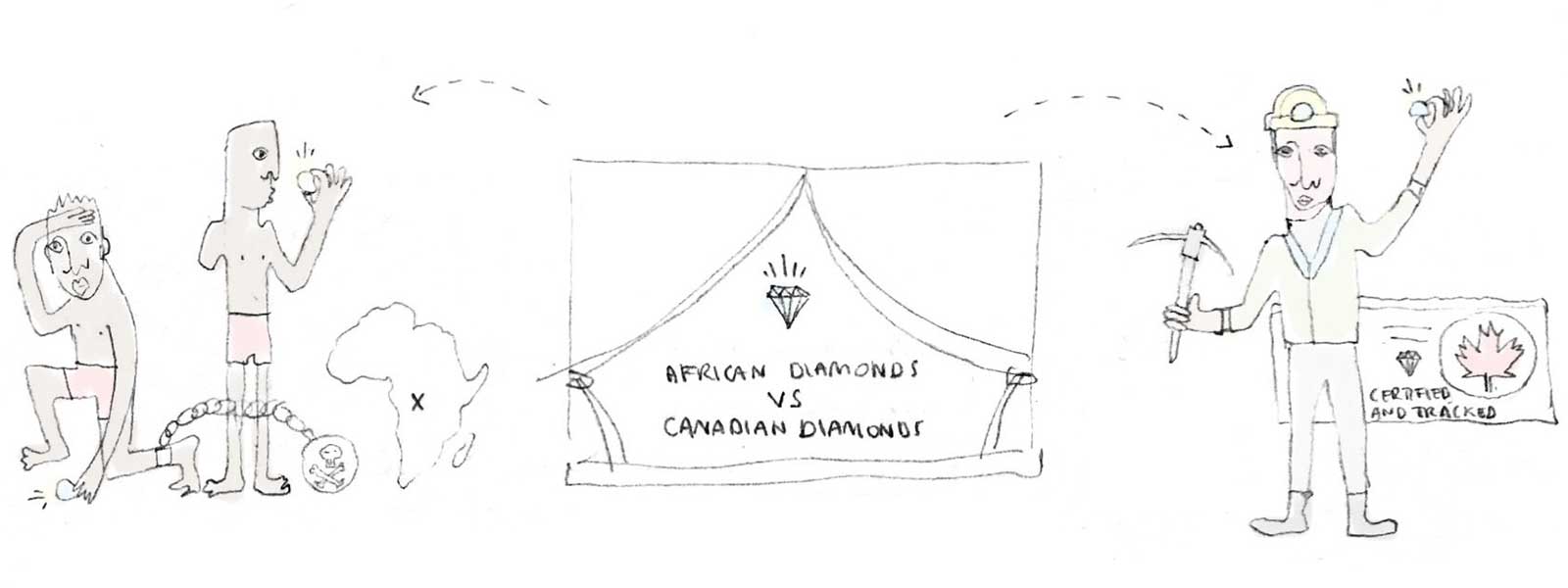
Analysing these international dynamics, amplified by the reach of the media, Canadian ethical diamonds can be considered as an alternative to blood diamonds. However, they constitute on the one hand, an attempt to implicitly show linear and simultaneously opposing links with contexts that are economically poor but rich in natural resources to be exploited and on the other images of Africa as synonymous with violence and primitivism. This continuous juxtaposition of images would seem to construct, in the eyes of international consumers, stereotypical representations of northern Canada as a pristine and pure rural space.
Massive mining
industrialisation in Canada
began in the mid-nineteenth century.
However, Yellowknife was founded in 1934 as a mining town following the discovery of gold deposits.
The diamond rush only began in the 1980s. The discovery of kimberlite in the NWT containing diamonds is traced back to the Canadian geologist Charles Fipke who, after many years of geological explorations, allowed the Ekati mine in the centre of Lac de Gras to open in 1998. A hundred kilometres away, the Diavik mine was also opened in 2003. Like Ekati, it is about 250 kilometres from Yellowknife.
Thanks to the certification signed by the Government of the Northwest Territories labelling the stones extracted in the Northwest Territories as ethical diamonds, since the early 2000s Canada has been advertised internationally as a country that exports diamonds mined in absolute legality.
As a nation free from civil wars, this legality is underscored by the fact that there is no link between the mining industry and conflicts.
My initial departure: September 2019
Yellowknife
While the existing analyses on Canadian ethical diamonds focus primarily on the decision-making criteria of consumers at the time of purchase and the segmentation of green and ethical customers, little is known about the mining context from which these stones come. This research is designed to fill these gaps by concentrating the analysis on the diamond mines in the Northwest Territories from which ethical diamonds are extracted.
My initial departure to the Northwest Territories, specifically to Yellowknife, took place in September 2019 and lasted two months. All plans for my second period of fieldwork were upset by the advent of Covid-19 which forced me to review the ethnographic methods to be used in this phase of my research. Conducting field research among the Indigenous peoples of Canada means establishing a relational process of knowledge negotiation with them. This approach to interaction is based on an Indigenous epistemology in which the relationship becomes the fulcrum for establishing any type of conversation.
The online meetings because of Covid-19, the importance of ethical aspects and my responsibility towards the indigenous people who would participate in the survey was important. The informants with whom I chose to interconnect were all adults and this fact certainly made the ethical aspects of the research easier to accommodate given that this excluded a whole series of critical issues related to research with minors, who are considered a particularly vulnerable community. On the other hand, conducting research with Indigenous people and following standardised rules, meant that my permission to build a relationship with them was strictly formalised and it was compulsory to formulate preliminary agreements that had to be accepted by both parties.
During my stay in Yellowknife, I became aware of how the mining companies operating in Canada, as well as the Canadian government, select the information to be publicly disclosed while concealing other items.
This aspect emerged particularly clearly when I found myself facing a paradox concerning international advertising narratives on ethical diamonds and a reticence, on the part of some people I met in Yellowknife (such as managers of mining multinationals, some Indigenous people, geologists, and engineers), to talk about ethical diamonds with me, a foreign researcher.
Although this aspect might appear to be a failing, especially for social researchers, I nevertheless tried to construct a reading of this phenomenon. This silence, in turn, facilitated the analysis of the information that companies publicly communicate to global consumers who are geographically and culturally distant from the mining context and the place where such reticence emerged and who are, therefore, unable to grasp the nuances and subtleties of the unspoken regarding ethical diamonds.
To explain this phenomenon, it could be useful to draw a sort of theoretical parallelism with a physiological problem with our vision, namely, long-sightedness.
Concept of Presbyopia:
The narrative on the eco-sustainable practices of the mining industry in Canada works in a directly proportional way to the distance from the extraction place

The Concept of Presbyopia guides me along the following line of reasoning: the further away from the mining context in the Northwest Territories the sharper the concept of ethicality related to the Canadian ethical diamonds and embedded in the corporate social responsibility thanks to advertising narratives and marketing strategies that increase corporate reputation, while the closer to the investigation context, the more the concept of ethicality becomes blurred, heterogeneous, fragmented and difficult to understand
To overcome the difficulty posed by silence and to select informants capable of explaining to us the reason for the reluctance to talk about Canadian ethical diamonds in Yellowknife, I turned Hannah Appel's concept of “modularity” into an ethnographic tool, according to which multinationals globally apply the same political-economic and technological strategies aimed at profit, as well as recurring social practices used for the selection and regulation of personnel.
Therefore, through an inductive approach applied to the concept of modularity, I also selected international interlocutors who were not involved in Canadian mining but who belonged to professional categories similar to those of the people we met in the field. Thanks to the information they provided, I was able to hypothesize that the contractual link with the mining company could be the key element that prevented us from communicating with the workers in Yellowknife. Through an abductive approach, from the analysis of the information collected we then developed a key to an understanding of the relationship between contractual constraint and explicit corporate social responsibility communication, conceived as a practice embedded in the ethicality of the business, from which silence emerges.
Meaning of the land to indigenous people
The idea that Indigenous peoples have of themselves is characterised by considering themselves immersed in an anthropic space built of social relations, historical events, and knowledge accumulated over the centuries as well as ceremonial practices, subsistence activities, and natural conditioning.
Through the centuries they have established a deeply emotional, symbolic, and economic bond with the natural environment and have developed sophisticated forms of Native ecological knowledge based on sensory perceptions, linguistic expressions, and cultural codes. Thus, the profound relationship that the Native people establish with the earth also involves the sphere of a person’s health and general well-being. The man-environment relationship can take the form of a complex and dynamic form of reciprocity, namely, a relationship of interdependence that involves the material and symbolic (ideational, sensorial) spheres of human activity and existence at the same time.
At the heart of traditional Native activities, there is no exchange for-profit or a logic of competition; rather sustenance is communal. The surplus is usually shared on festive and ceremonial occasions, and the person sharing those goods increases his or her social prestige in the group.
The subsistence-oriented economy, which today also includes a type of mixed economy, also ensures social reproduction. The Northwest Territories are the habitat of certain animals traditionally essential for the subsistence of Indigenous communities. Among these animals, the main one is the caribou.
Field stage and goals
- Anthropologist
Relational process of negotiation
- Indigenous: Dene Nation community
Relationship is the fulcrum to establishing any type of conversation
- My permission to build a relationship with indigenous people was strictly formalised and it was compulsory to formulate preliminary agreements that had to be accepted by both parties.
When elders spoke about ethics and sustainability, they referred exclusively to the need to educate young people in traditional ways of living and beliefs and the protection of their land and traditional activities from new industrial forms outside their culture. Therefore, they do not approve of the absorption of young Indigenous people into the diamond industry.
The significant increase in economic development in the Northwest Territories due to diamond mining has also inevitably increased the demand for labour. While the government and industry perceived the Indigenous people of the Northwest Territories to be a barrier to extractive advancement in the 1970s and 1980s since the late 1990s there has been a massive shift in the way that multinational mining companies view the hiring of both male and female Indigenous people. While Indigenous populations could provide a workforce in the vicinity of the mining sites, they were also viewed as a source of cheap labour for carrying out low-skilled tasks. Although indigenous groups are more involved in this industry than in the past, the indigenous communities, especially certain social categories such as that of women, only benefit financially from mining to a limited extent. Since the early 2000s, the average wage in the Diavik mine has increased by 15% for male workers and 3% for female workers.
The elders of the region's Indigenous communities continue to be the bearers of their culture. In doing so, they consistently cite the following phrase: ‘The land is life. People do not control the land; the land controls people and their actions’. They also describe: ‘a landscape imbued with rivers of meaning’.
The opening of the diamond mines in the Northwest Territories also saw the introduction of the Impact and Benefit Agreements (IBAs) from the end of the 1990s. IBAs are agreements between the industry and Indigenous groups that determine the types of governance of non-renewable resources within Indigenous territories.
For Indigenous communities, the IBAs introduced hiring quotas, access to work skills training courses, joint ventures between Indigenous diamond cutting and polishing companies and multinational companies, financial compensation for opening mines in Indigenous territories, environmental monitoring measures to assess the impact of mining on the water, soil, and air, and mitigation measures curbing the effects on traditional Indigenous practices. The multinational companies guarantee the development of profitable socioeconomic relationships with the region’s Indigenous groups. However, the clauses in the agreements are legally structured to prohibit any kind of protest against the mining industry by the Indigenous people.
The consumers’ knowledge about Canadian ethical diamonds is accrued through mass media.
Customers all saw mining as occurring in an extremely dangerous environment, with miners in a professional category on which interlocutors projected images of Dickensian misery.
This representation guides all aspects of the consumers’ purchase choices and shapes their perceptions of equality and respect toward all workers involved in the Canadian diamond supply chain.
Block chain diamonds
In the view of consumers, respect for safety protocols for workers and measures to safeguard the environment in Canada is guaranteed by the presence of multinational mining companies that apply regulations defined, by many informants, as "western-style", in contrast to the lack of safety protocols that they see as typical of African mines.
How can the meaning of traceability be conveyed concretely to consumers? To evangelizing on the subject for his customers, the jeweller regularly makes appearances at educational facilities to discuss ethical jewellery. The jeweller agrees that information about Canadian ethical diamonds should be available not only in their stores, but also at conferences within fair trade fairs. The strategy of using the conference as a channel for disseminating data, in addition to reaching a wide audience, gives the information formality and thus greater narrative power, as the topic attains cultural as well as commercial ramifications. The concept of an identity of Canadian diamonds arises in a context of globalisation, in which relations between countries, cultures and people are complex.
Italian ethical consumers deployed identity obsession as a psychological tool to hold on to the narrative about traceability which helped them act in a way that conforms to their ideals. The concept of Canadian ethical diamonds traceability serves as an identity trait.


